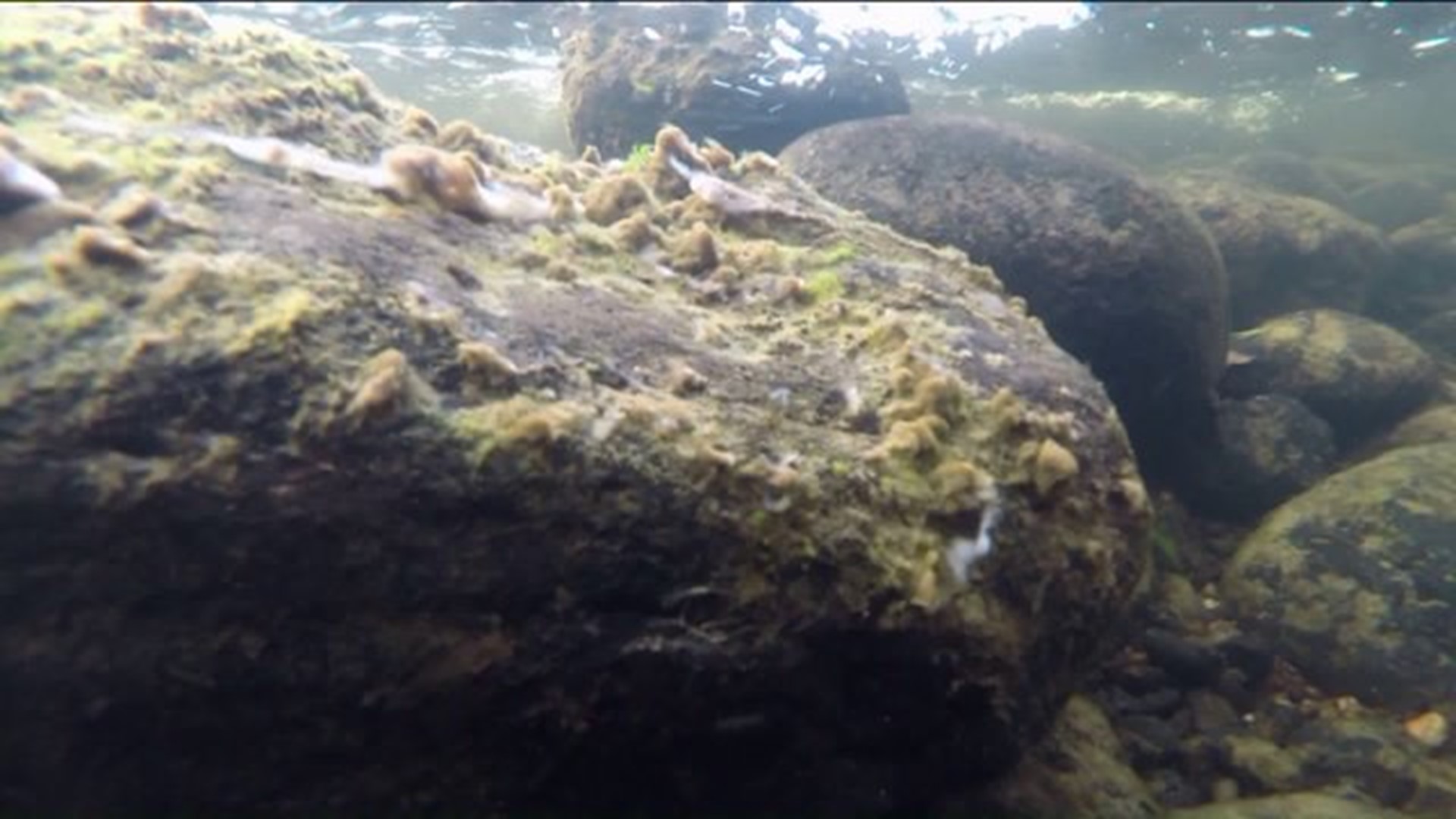BARKHAMSTED – Biologists in Connecticut have discovered a new species of “rock snot” that is unique to a half mile stretch of the Farmington River.
“So far in the world this is the only place. It’s the first time that this species has been found,” said Mike Beauchene, Supervising Fisheries Biologist with the Connecticut Department of Energy and Environmental Protection.
Dr. Diba Khan-Bureau from Three Rivers Community College teamed up with Beauchene after an angler found the algae species in 2011. After years of research and sending the samples around the world, they determined the species called Didymosphenia hullii is only found in the West Branch of the Farmington River in Barkhamsted.
It belongs to a group of brown, clumpy algae called “rock snot,” which has possible negative consequences to trout waters around the globe. It’s an invasive species, which could disrupt the natural ecosystem in the Farmington River.
“It has the potential to grow and cause large quantities like a carpet, completely blanketing and some would say smothering what would naturally be there,” said Beauchene.
“The big fear would be if there was too much of a shift that would cause a problem for trout fishing. [The Farmington River] is Connecticut’s premiere trout fishery. People come from all over the world to fish here and that’s probably why we ended up with some of these algae in the first place.”
So far the rock snot hasn’t done that type of damage in Barkhamsted, but biologists worry it could be a different story if it blooms elsewhere.
That’s why they’re asking all anglers, boaters, jetskiiers, and others who use the river to be careful not to transport the algae to another river. They recommend practicing the “clean, drain, dry” technique on anything that had contact with the water or the bottom of the river. The cells have the ability to remain viable for months under even slightly moist conditions.

